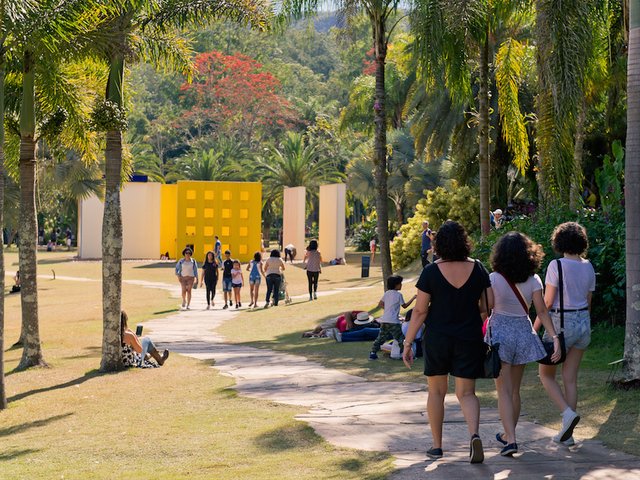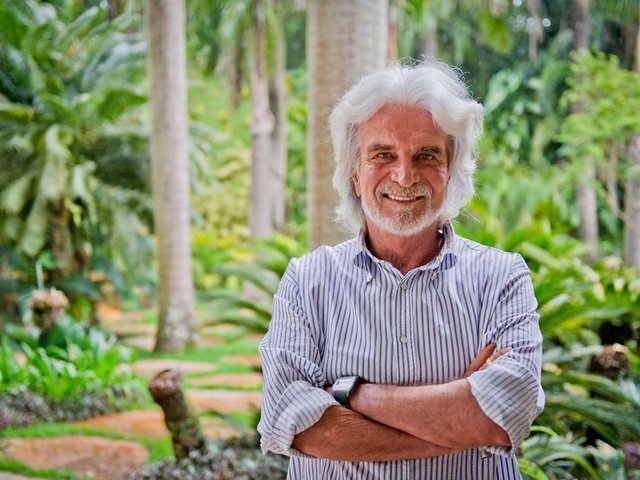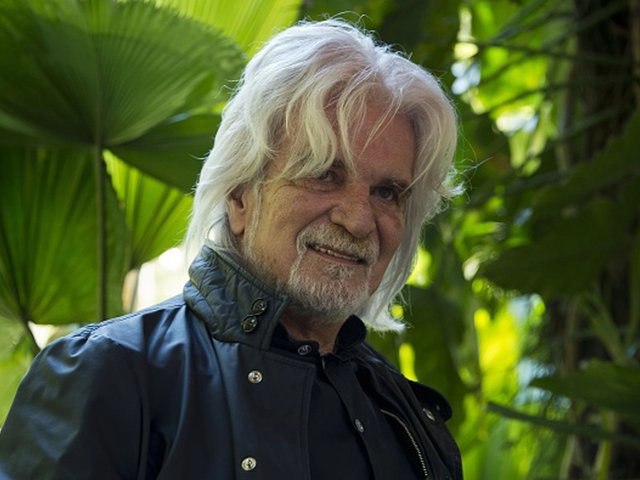The Inhotim Institute in Minas Gerais, Brazil, has announced that its founder, the art collector and former mining magnate Bernardo Paz, will transfer around 330 works from his collection to the private institution.
Paz holds a vast contemporary art collection spanning thousands of works by blue-chip artists including Dan Graham, Olafur Eliasson, Matthew Barney and Robert Irwin.
The transfer includes works by Arthur Jafa, Arjan Martins, Do Ho Suh, Ernesto Neto, Pipilotti Rist and others. Some of the pieces are or will be featured in the ongoing exhibition Acervo em Movimento (Collection in Motion)—a programme launched to showcase new acquistions.
Lucas Pêssoa, who was appointed the president and director of Inhotim earlier this year and previously served as the former director of the Museum of Art of São Paulo Assis Chateaubriand, says the donation symbolises a significant benchmark for the institution as it works to both democratise public access and ensure future financial stability.
“There have been more than 4 million visitors in the last 15 years, as well as 800,000 children, young people and adults who have been served by its social-educational programs,” Pêssoa says. “Therefore, despite being a private institution, Inhotim’s mission has always been a public one.”

The donation includes Arjan Martins, Américas (2016). Courtesy Inhotim Institute.
The sculpture park and botanical garden, which spans more than 5,000 acres, was founded by Paz as a non-profit centre in 2006, already contains a collection spanning more than 1,000 works. The grounds comprise 23 galleries, including four rotating galleries, and 19 major permanent installations by Hélio Oiticica, Lygia Pape, William Kentridge, Tunga and others, which have been included in the donation.
Inhotim has also announced that a newly-formed advisory board, with Paz as the president, will include 30 members from various industry sectors within and outside the arts, such as the collector and adviser Susana Steinbruch, the founder of Fundacción Museo Reina Sofia, and Guilherme Teixeira, the head of a Brazilian construction conglomerate.
According to a statement released by Inhotim, the group will be “responsible for the institute’s administrative and financial decisions [but] play no decisive role in the cultural programme”, which will be overseen by the centre’s artistic director, Julieta González.

Doug Aitken, Sonic Pavilion (2009). Courtesy Instituto Inhotim. Photo: João Kehl.
Paz was charged with money laundering and handed a nearly ten-year prison sentence in 2017 after he was accused of transferring nearly $100m made as donations to Inhotim to his mining and steel companies. At the time, it was speculated that works from his collection would be used to help repay his debts to the state, although a judge later prohibited such use.
Paz was acquitted in 2020 following a unanimous decision by a Brazilian court. In a previous interview, Paz told The Art Newspaper he was “glad the truth came out [and] now I hope to focus my attention exclusively on my companies and on art, which is what really matters to me”.
In a previous report by The Art Newspaper on the fate of Inhotim after Paz’s conviction, published while he was appealing his sentence, several artists including John Ahearn and Delson Uchôa offered mixed reviews of their time working with the institute.





